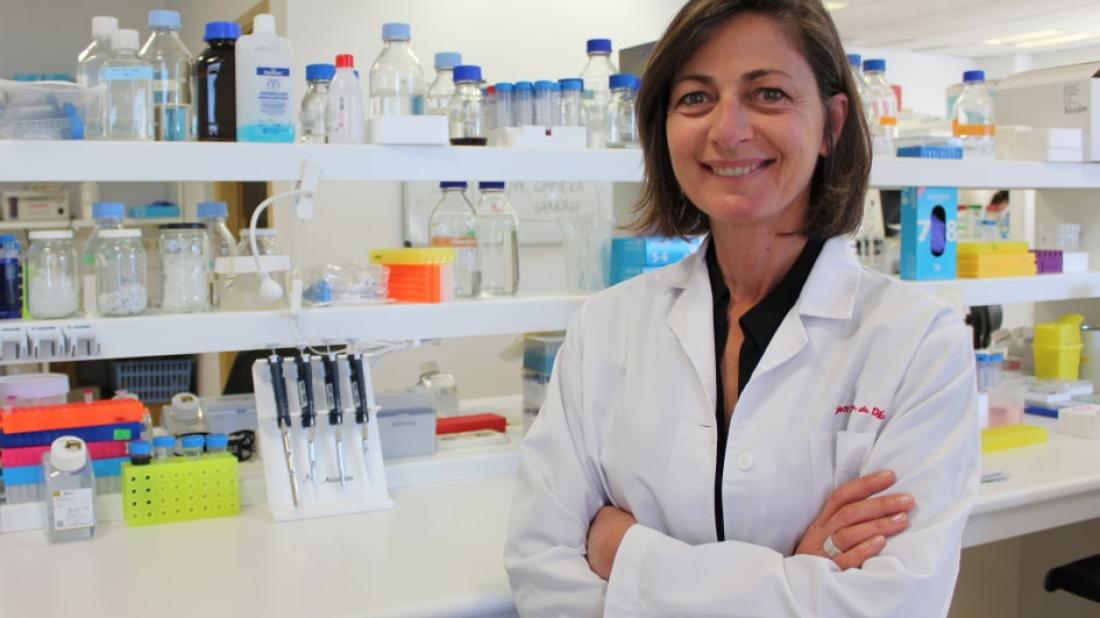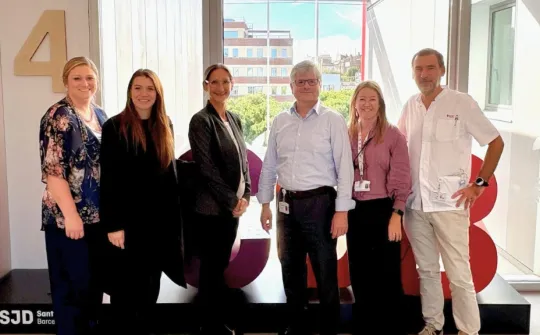“When I started researching developmental tumors, we couldn't have imagined where we would be today”

The head of the Molecular Oncology Laboratory at the Pediatric Cancer Center Barcelona explains how child cancer research has changed in recent years.
Cinzia Lavarino is one of the longest serving physicians and researchers in child cancer at the SJD Barcelona Children's Hospital. Since 2007, she has been Lead Researcher for the Translational Genomics Group in the Developmental Tumors Laboratory, included in the SJD Research Institute's Pediatric Cancer Program. Since 2019, Lavarino has been the head of the Molecular Oncology Laboratory at the Pediatric Cancer Center Barcelona, whose activity focuses on care. The Molecular Oncology Laboratory focuses on the diagnosis and molecular classification of tumors, the prognosis prediction, the identification of therapeutic targets, and the monitoring of child cancer, principally of solid tumors.
How did you come to be at the Oncology Laboratory at the SJD Barcelona Children's Hospital?
I arrived here by chance. My parents are of Italian origin, although I grew up in Tenerife. I studied Biology and Biotechnology In Italy, and I trained while working in the Molecular Diagnostics Laboratory in the Instituto Nazionale dei Tumori In Milan. The truth is, I liked researching adult cancer, but living in Barcelona also attracted me, and I moved here owing to personal circumstances. Before working here, I did a post-doctoral degree at the University of Barcelona, in the Biochemistry Department of the Pharmacy Faculty, where I stayed for three years. Once I was here, in 2005 Jaume Mora offered me the chance to work with Carmen de Torres and another colleague as a post-doctoral researcher in theDevelopmental Tumors Laboratory. The team, which had started its work in 2003, was made up of just five individuals when they embarked on their initial funded projects, between 2005 and 2006. Now there are 34 people working in the Child Oncology Laboratory: 28 in the Developmental Tumours Laboratory and 6 in the Molecular Oncology Laboratory.
How have research and care evolved since then?
When I started as a researcher back in 2005, I helped Carmen de Torres in certain molecular tests; she dealt with all the aspects related to healthcare. Over this period, both aspects (scientific and healthcare) have grown a great deal, particularly so over the last three years, with the introduction of genomics into patient care. The evolution of technology and understanding is enabling us to use the benefits of genomic analysis, which has increased exponentially since methylation analysis was introduced.
This technique marked a turning point in the research and treatment of child cancer.
It was not only the technique, but a conceptual change The Heidelberg Group, which works on child cancer, was one of the first to understand that there was a need for a paradigm shift for developmental tumors. Until then, the aim was to follow the model of adult cancer, which has numerous molecular alterations, when in pediatric patients we would find very few. That was how it was until we understood that these tumors have an epigenetic basis and the alterations have their origin in that basis. At that point, genomic methylation analyses of tumor cells, the so-called methylome, began to be introduced.
This technique offers information on the origin of the tumor and the alterations that the embryonic cell acquires in development until becoming a tumor: the genesis thereof. The Heidelberg team developed an algorithm which it shared openly on a platform. There we have the information which makes it possible to read the methylome and to determine what disease the patient has and classify it into the different groups according to the alteration detected in each case.
In 2019, here at the SJD Barcelona Children's Hospital, we implemented the DNA methylation analysis profile as a healthcare test. This was made possible thanks to the knowledge acquired previously with my research group, which enabled us to implement this type of study in the setting of healthcare activity. We are currently the only center in Spain, and one of a few in Europe, to carry out this study (for both our own patients and for external centers).
What has this paradigm shift meant for pediatric cancer research?
Child cancer investigation projects have increased exponentially. Knowledge is growing rapidly, it has shot up; now we have more genomic data that we can understand. A great deal of information is generated which, with the research group, we have the challenge of processing and understanding in order for it to be useful for the patient. There is an awful lot of knowledge in the genomic setting which needs to be translated to the healthcare and clinical settings.
For the team, it means a constant effort to keep up-to-date: reading the latest publications, keeping permanently abreast of everything and in contact with the principal groups. At times, there are highly novel proposals whose incorporation we need to evaluate, principally with the aim that they offer a healthcare benefit. Our work is to find what entails an improvement for the patient's life, when, and with which technique.
Could we have imagined how far the research has come today?
When I arrived here, we dreamed about doing research as it was being done with adult cancer and there is no way we could have imagined reaching the point where we are today. At that time we knew nothing of the methylome study, which opened the door to vast amounts of knowledge and possibilities for us. Forming part of international collaboration networks, particularly in Europe and the United States, has also been a determining factor. Consortia have been created which bring together researchers from many countries, who are allowed to pool their knowledge and, above all, data, which is vital for the advancement of research into child cancer, whose cohorts are very low. It is not just a case of technology, but of an enormous effort of coordination driven by many international groups.
The support of our donors has also been essential, especially from patient family associations. Their contributions have been fundamental for the growth of the laboratory during all these years because, without them, we would not have gotten this far. If we want to make progress in research into developmental cancer, we need to combine all possible resources.



